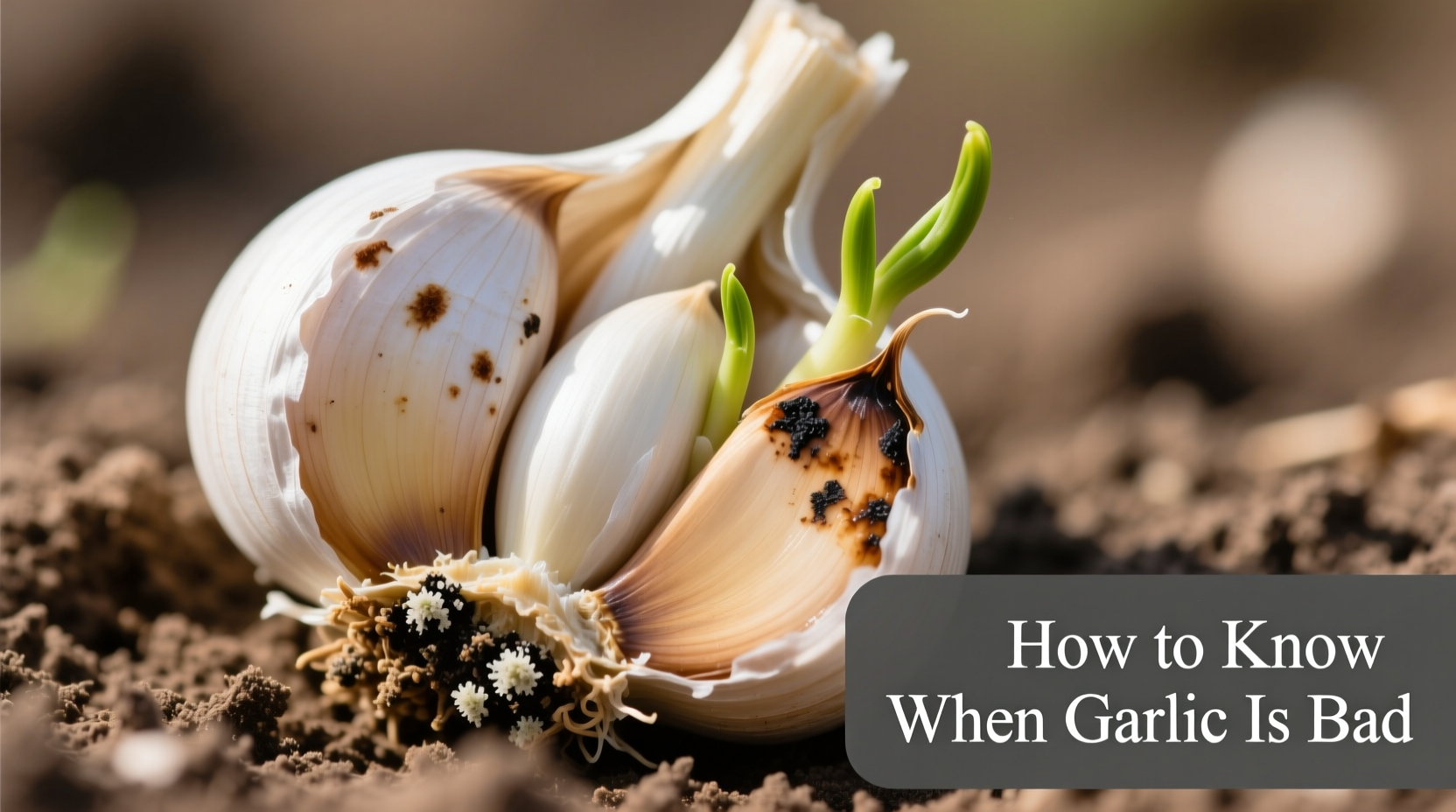If your garlic has brown or yellow spots, feels soft or mushy when squeezed, shows visible mold growth, or emits a sour or unpleasant odor, it has gone bad and should be discarded immediately. Fresh garlic should be firm, have tight white skin, and smell distinctly garlicky without any off-notes.
7 Clear Signs Your Garlic Has Gone Bad (And What to Do)
Garlic transforms ordinary dishes into culinary masterpieces, but spoiled garlic can ruin recipes and potentially make you sick. As someone who's worked with professional kitchens for over 15 years, I've seen how crucial proper garlic assessment is for both flavor and food safety. Let's explore exactly how to determine if your garlic has passed its prime.
Visual Indicators: What Bad Garlic Looks Like
Before touching or smelling your garlic, start with a visual inspection. Your eyes provide the first line of defense against spoiled garlic.
Discoloration Patterns
Fresh garlic cloves should maintain a bright white or off-white color. When garlic begins to spoil, you'll notice:
- Brown or yellow spots developing on cloves
- Grayish or black discoloration, particularly at the root end
- Green sprouts emerging from the center (while small sprouts might be salvageable, large sprouts indicate aging)
| Condition | Fresh Garlic | Warning Signs | Action Required |
|---|---|---|---|
| Color | Pure white to off-white | Brown spots, yellowing, gray areas | Discard if spots cover more than 10% of clove |
| Surface | Tight, papery skin | Visible mold (white, green, black) | Discard entire bulb immediately |
| Sprouting | No sprouts | Green sprouts emerging | Remove small sprouts; discard with large sprouts |
Mold Growth: The Non-Negotiable Red Flag
Any visible mold on garlic requires immediate disposal of the entire bulb. Unlike some foods where you can cut away mold, garlic's structure allows mold to penetrate deep into cloves even when not visible on the surface. The USDA Food Safety and Inspection Service confirms that mold can have invisible roots that spread throughout porous foods like garlic.

Texture Tells the Truth: What Bad Garlic Feels Like
Your fingers provide critical information about garlic's condition. Properly stored garlic should feel solid and firm.
The Squeeze Test
Gently squeeze individual cloves between your fingers:
- Fresh garlic: Feels rock-hard with no give
- Warning sign: Soft spots or areas that yield to pressure
- Danger zone: Mushy texture throughout the clove
According to research from the University of California Agriculture and Natural Resources, garlic typically maintains firmness for 3-6 months when stored properly in a cool, dark place with good air circulation. Moisture loss and enzymatic changes cause texture deterioration as garlic ages.
Peeling Problems
When peeling suspect garlic:
- Fresh cloves separate cleanly from their skin
- Slippery or sticky texture indicates spoilage
- Excessively dry, shriveled cloves have lost flavor potency
Smell Test: Your Nose Knows
The distinctive garlicky aroma changes significantly when garlic spoils:
- Fresh garlic: Sharp, clean, pleasantly pungent scent
- Warning sign: Sour or vinegar-like odor
- Danger zone: Rancid, musty, or generally unpleasant smell
Food science research shows that as garlic spoils, sulfur compounds break down into less desirable volatile compounds that create off-odors. Trust your nose—if something smells "off," it probably is.
When Slightly Sprouted Garlic Is Still Usable
Many home cooks wonder about garlic with small green sprouts. Here's the breakdown:
- Small sprouts (under 1 inch): Remove the green sprout and use the remaining clove. The sprout contains bitter compounds but the rest remains edible.
- Large sprouts: The garlic has significantly aged and lost flavor potency. Discard for best culinary results.
- Multiple sprouts per clove: Indicates advanced aging. Not recommended for use.
Cornell University's Food Safety Lab notes that while sprouted garlic isn't dangerous, the sprout itself develops a bitter flavor that can negatively impact your dish's taste profile.
Proper Storage: Extend Your Garlic's Freshness
Understanding how to store garlic properly prevents premature spoilage:
Room Temperature Storage
- Store in a cool, dark place with good air circulation
- Use mesh bags, paper bags, or traditional garlic keepers
- Avoid plastic bags which trap moisture
- Never refrigerate whole bulbs (causes sprouting)
Refrigeration Guidelines for Prepared Garlic
- Minced or chopped garlic: Store in airtight container for up to 1 week
- Garlic in oil: Use within 4 days (risk of botulism)
- Always label with preparation date
The National Center for Home Food Preservation warns that garlic-in-oil mixtures require special handling due to botulism risk. Never store homemade garlic oil at room temperature.
Food Safety: Risks of Consuming Bad Garlic
Eating spoiled garlic typically causes:
- Mild stomach upset
- Nausea
- Unpleasant aftertaste that ruins your dish
While rare, improperly stored garlic (especially in oil) can potentially harbor Clostridium botulinum bacteria. The FDA advises that garlic-in-oil mixtures should be refrigerated and used within 4 days to prevent botulism risk.
Maximizing Garlic's Shelf Life: Pro Tips
- Buy only what you'll use in 1-2 months
- Store away from onions (they accelerate each other's spoilage)
- Never wash garlic before storage (moisture promotes mold)
- Check your garlic monthly for early spoilage signs
- For long-term storage, freeze peeled cloves in airtight containers
When in Doubt, Throw It Out
Garlic is inexpensive compared to the risk of foodborne illness or ruined meals. If you notice multiple warning signs—discoloration, soft spots, and off-odors—discard the entire bulb. Remember that one bad clove can compromise an entire dish's flavor profile.











 浙公网安备
33010002000092号
浙公网安备
33010002000092号 浙B2-20120091-4
浙B2-20120091-4